Motorola is a name that is as synonymous with mobile phones as it is with Android. It’s a manufacturer to which I have owned various Motorola devices of the years and decades.
With the brand now being a sub-brand for its parent company, Lenovo, is having a bit of a resurgence, with the company just announcing three new edge devices to the marketplace, with the Moto Edge 30 ultra being the more high-end device that is looking to take on Samsung’s Galaxy S series but also the recently announced iPhone from Apple.
What’s in the box?
In the box, you get the device, a clear plastic phone cover which I think all phones should always come with and congratulate Motorola on providing, a 1-metre USB-C to USB-C cable, 125W Fast charger, SIM ejector tool and the usual paperwork.
The Design
The Motorola Edge 30 ultra comes with a 6.67-inch Endless Edge Display (2400 x 1080 @ 394ppi) that offers a 144Hz refresh rate which, when turned on the display is very clear and bright. Although there are small bezels that surround the top, bottom and sides of the device despite the sides being slightly curved around.
The front display also houses the under-display fingerprint sensor, which is quite snappy most of the time but if your device has quite a few smudges on it or dirt, the sensor can have some difficulty activating and scanning fingerprints. Whilst this was rare, there were some moments when this became an issue.
The right-hand side of the device houses the volume rocker, and directly underneath, you will find the power/standby button. The top side of the Motorola Edge 30 Ultra houses a single microphone port towards the left hand side, whilst the bottom side of the Edge 30 Ultra houses the dual SIM card tray port on the left-hand side, the middle having the USB-C charging port and to the right of the port is the speaker grill.
Flipping the Motorola Edge 30 Ultra, there is the rear triple camera set-up made up of a 200MP main camera lens, 50MP Ultrawide angle lens and a 12MP Portrait (2x telephoto) lens. The rear camera set-up is contained with a slightly raised housing from the main rear body by approximately .5mm. Next, the rear camera setup is a dual LED flashlight.
The Motorola logo branding of the only thing left in the back, which is located directly in the dead centre rear of the device.
Lights, Camera Action!
The Motorola Edge 30 Ultra comes with a triple rear camera setup that is made up of a 200MP main camera lens, 50MP Ultrawide angle lens and a 12MP Portrait (2x telephoto) lens.
The modes that are available on the Motorola Edge 30 Ultra include Ultra-Res, Pro (with Long Exposure), 360° Panorama, AR Stickers, Live Filter, Dual Capture, Night Vision, Portrait (with HDR), Scan and Spot Color. For the Photo modes and for video modes the modes available include Dual Capture, Portrait, AR Stickers, Timelapse (with Hyperlapse), Macro, Super Slow motion and Spot Colour.
There is also artificial intelligence placed into the camera’s software that can help and offer Auto Smile Capture, Smart Composition, Shot Optimisation, and Auto Night Vision alongside Google Lens integration.
Using the rear cameras in the normal daylight hours, you will find pics taken on these cameras to be snappy, albeit sometimes either too warm or a bit cold, but no noise, which is a bonus. Not sure if this is because of AR intelligence or the main camera software but just seemed weird some photos would turn out flawless and right, but others could be quite warm and a little overexposed to then being cool and slightly dull in the vibrancy of the colours.
The nighttime shots were a little disappointing with some noise, under exposure and just the pictures themselves whilst they are ok; they don’t stack up to say the Pixel’s camera especially at night.
The front facing camera is a 60MP camera which in daylight is quite good, clear and full of detail whereas the night time shots were darker and lacking detail which is to be expected but something to consider if you want to take pics during a party at night.
Performance & Battery Life
The Motorola Edge 30 Ultra is powered under the hood by Snapdragon 8+ Gen 1 Mobile Platform Processor alongside 12GB RAM and 256GB of onboard storage, which sadly cannot be expanded via MicroSD card, so you will need to ensure that you have some cloud backup storage available.
In terms of performance, the Snapdragon 8+ Gen 1 Mobile Platform Processor alongside 12GB RAM does make the phone snappy, with multi-tasking between apps the phone didn’t even sneeze, sutter or cough.
Even playing high end graphic mobile games the device didn’t get too hot, there was some warmth but not overly almost kind of burning your fingers off holding them. Furthermore, the 144Hz refresh rate for the display allowed it to keep up with graphics without blurring some of the edges over time.
The Moto Edge 30 Ultra comes with Wi-Fi 802.11 a/b/g/n/ac/ax, 2.4 GHz | 5 GHz | 6GHz, Wi-Fi 6E, Wi-Fi hotspot, Bluetooth version 5.2, 3G, 4G and 5G network connectivity, although the 3G network capabilities here are well and truly coming to a close as our major telco’s are shutting down their 3G networks.
Battery-wise, the Moto Edge 30 Ultra comes with a 4610mAh battery which the company stated can last a full day, albeit under testing with light to medium usage but for full day of usage I found this to be much less at around about 40-45% even as low as 25%-30%.
However this can be alleviated thanks to the included 125W brick charger the comes with the device (I was surprised it was included and glad it was) which can charge the device up with 7-10 mins and give you almost a full day’s charge. Though I did find if the device is closer to 10% that it may take up to nearly half an hour or so for full charge.
Software and UI
The Motorola Edge 30 Ultra runs Android 12 right out of the box and it is close to vanilla Android, but Motorola have added their own light My UX over the top which adds Motorola’s own gestures, camera and Moto App which can help customise your phone and experience, set up physically touchscreen buttons or swipes, layouts and much more.
The My UX is interesting as its not as bad as Samsung’s One UI and Oppo’s ColorOS. As stated you can choose between swiping to exit and go between apps and screens or choose on screen buttons which is generally my preference but of course, this can be decided by the user at the end of the day.
During the review period, there were a couple of security updates, with the latest being an August security patch update. Although no word on when Android 13 will be made available and given Motorola’s track record with rolling out these major firmware updates, this might take some time…….possibly.
Should you consider buying one?
Despite the camera issues and uncertainty of security and Android OS updates being an issue with Motorola, the lack of a 3.5mm audio jack and expandable storage, the Motorola Edge 30 Ultra does offer some high end features and specs without needing to spend $2000+ on a similar device.
The performance offered by the Snapdragon 8+ Gen 1 Mobile Platform Processor certainly is the outstanding winner here, followed by the cameras both front and rear in daylight or the right lighting scenarios makes the Moto Edge 30 Ultra worthy of at least some consideration.
The Moto Edge 30 Ultra can be purchased from major retailers such as JB Hi-Fi, The Good Guys, Officeworks, Big W, Mobileciti and Lenovo.com for $1,399.

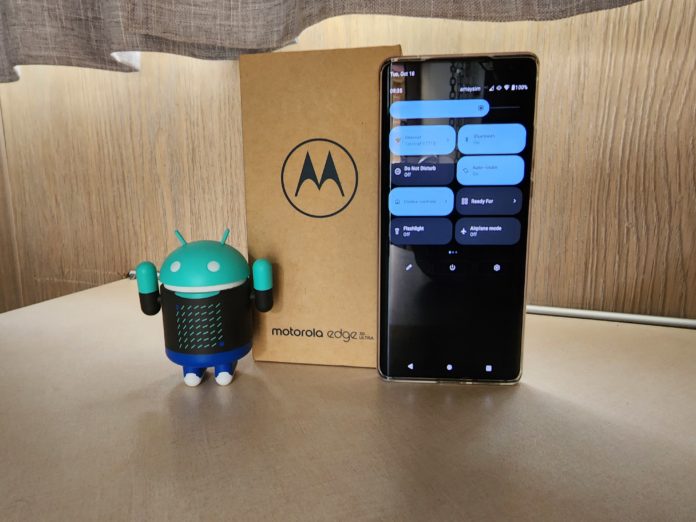

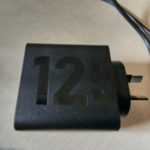
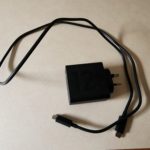
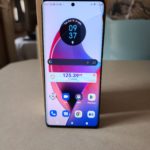
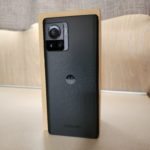











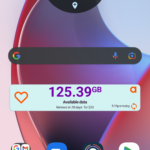
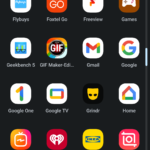

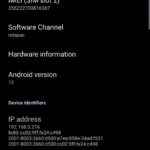
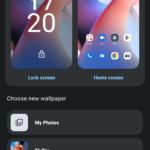
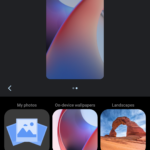



Lenovo needs to lift their game, and match Google, by releasing a version of this, with at least 512Gb of on board storage. 256Gb as top end does not cut it as being top end any more.